Defenses for Fall 2012
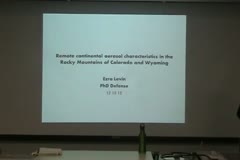
Remote Continental Aerosol Characteristics in the Rocky Mountains of Colorado and Wyoming
December 13, 2012
Ezra Levin
The Rocky Mountains of Colorado and Wyoming enjoy some of the cleanest air in the United States, with few local sources of particulate matter or its precursors apart from fire emissions, windblown dust, and biogenic emissions. However, anthropogenic influences are present as regional haze, with sources as diverse as the populated Front Range, large isolated power plants, agricultural emissions,…
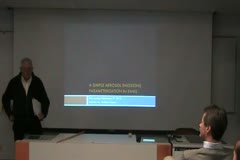
A Simple Parameterization of Aerosol Emission in RAMS
December 07, 2012
Ted Letcher
Throughout the past decade, a high degree of attention has been focused on determining the microphysical impact of anthropogenically enhanced concentrations of Cloud Condensation Nuclei (CCN) on orographic snowfall in the mountains of the western United States. This area has garnered a lot of attention due to the implications relating to local water resource distribution within this region.…
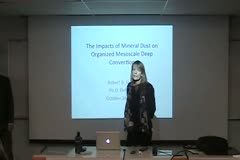
The Impacts of Mineral Dust on Organized Mesoscale Deep Convection
October 26, 2012
Robert Seigel
The overarching goal of this dissertation research is to investigate how mineral dust impacts various aspects of organized deep moist convection (DMC) using numerical modeling. From a bulk perspective, organized mesoscale DMC can be characterized by heating (i.e. latent heating precipitation production) above cooling (i.e. cold pools) that is long-lived. The balance between dynamics and…
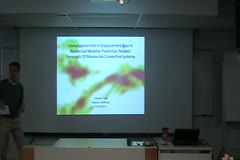
Investigation Into a Displacement Bias in Numerical Weather Prediction Models' Forecasts of Mesoscale Convective Systems
October 26, 2012
Charles Yost
Although often hard to correctly forecast, mesoscale convective systems (MCSs) are responsible for a majority of warm- season, localized extreme rain events. This study investigates displacement errors often observed by forecasters and researchers in the Global Forecast System (GFS) and the North American Mesoscale (NAM) models, in addition to the European Centre for Medium Range Weather…
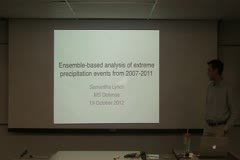
Ensemble-Based Analysis of Extreme Precipitation Events from 2007-2011
October 19, 2012
Samantha Lynch
From 2007 to 2011, 22 widespread, multiday rain events occurred across the United States. This study will conduct numerical model evaluation of three ensemble prediction systems – the European Centre for Medium-Range Weather Forecasts (ECMWF), the National Centers of Environmental Prediction (NCEP), and the United Kingdom Office of Meteorology (UKMET) using the area under the relative…
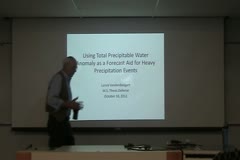
Using Total Precipitable Water Anomaly as a Forecast Aid for Heavy Precipitation Events
October 18, 2012
Lance Vanden Boogart
Heavy precipitation events are of interest to weather forecasters, local government officials, and the Department of Defense. These events can cause flooding which endangers lives and property. Military concerns include decreased trafficability for military vehicles which hinder both war- and peace-time missions. Even in data-rich areas such as the United States, it is difficult to determine…
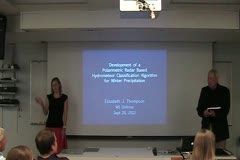
Development of a Polarimetric Radar Based Hydrometeor Classification Algorithm for Winter Precipitation
September 28, 2012
Elizabeth Thompson
The nation-wide WSR-88D radar network is currently being upgraded for dual-polarized technology. While many convective, warm-season fuzzy-logic hydrometeor classification algorithms based on this new suite of radar variables and temperature have been refined, less progress has been made thus far in developing hydrometeor classification algorithms for winter precipitation. Unlike previous…
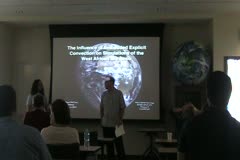
The Influence of Embedded Explicit Convection on Simulations of the West African Monsoon
September 06, 2012
Rachel McCrary
The simulation of the West African monsoon is examined in two coupled general circulation models (CGCMs). The first model is the standard Community Climate System Model (CCSM) which uses traditional parameterizations to represent convective processes. The second model is the superparameterized-CCSM (SP- CCSM), in which convective parameterizations have been replaced by embedding a…
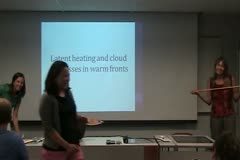
Latent Heating and Cloud Processes in Warm Fronts
August 27, 2012
Adele Igel
The results of two studies are presented in this thesis. In the first, an extratropical cyclone that crossed the United States on April 9-11 2009 was successfully simulated at high resolution (3km horizontal grid spacing) using the Colorado State University Regional Atmospheric Modeling System. The sensitivity of the associated warm front to increasing pollution levels was then explored by…
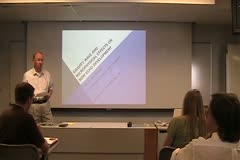
Gravity Wave and Microphysical Effects on Bow Echo Development
August 22, 2012
Rebecca Selin
Numerical simulations of the 13 March 2003 bow echo over Oklahoma are used to evaluate bow echo development and its relationship with gravity wave generation and microphysical heating profile variations. The first part of the research is directed at an explanation of recent observations of surface pressure surges ahead of convective lines prior to the bowing process. Multiple fast-moving n = 1…
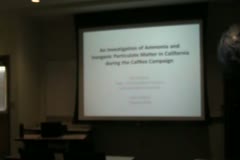
An Investigation of Ammonia and Inorganic Particular Matter in California during the CalNex Campaign
August 07, 2012
Luke Schiferl
Over the last century, the rise of industrial agriculture has greatly increased the emission of ammonia (NH3) from livestock waste and synthetic crop fertilizers to the atmosphere. Ammonium (NH4) aerosol, which can be formed through the neutralization of atmospheric acids by NH3, is a key component of particulate matter (PM) in the atmosphere. PM causes…
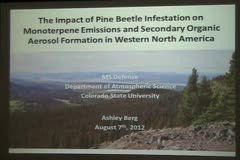
The Impact of Pine Beetle Kill on Monoterpene Emissions and Secondary Organic Aerosol Formation in Western North America
August 07, 2012
Ashley Berg
Over the last decade, an extensive beetle outbreak has impacted western North America resulting in the mortality of over 100 km^2 of forest throughout British Columbia and the western United States. Climate change has aided the expansion and continuation of this beetle infestation for more than a decade as beetles survive milder winters and expand northward and to higher elevation areas.…
